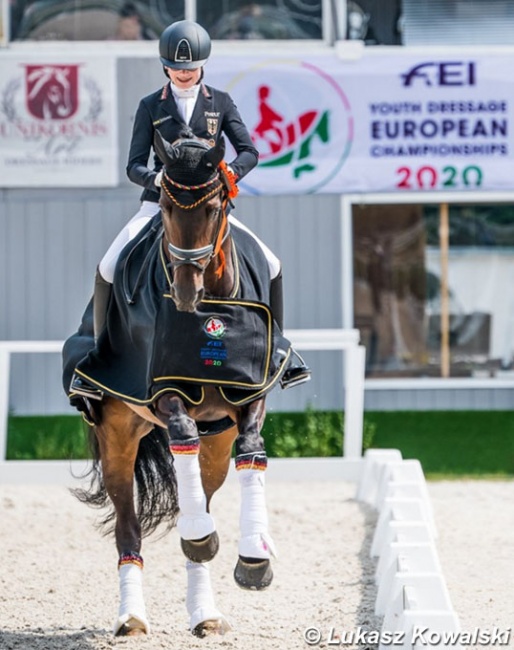
Germany's Clara Paschertz won the preliminary warm-up test at the 2020 European Children Championships at Stable Unikornis in Pilisjaszfalu near Budapest (HUN) on Monday 10 August 2020.
The 2020 European Youth Championships in Budapest consolidate the European Dressage Championships for all five FEI youth divisions. The Hungarian organisation came to the rescue for the pony, junior and young riders who saw their annual Europeans cancelled when venues Strzegom (POL) and Hartpury (GBR) pulled out due to COVID-19.
Week one of the 2020 European Youth Championships kicked off with the Children (12 - 14) and Junior Riders (14 - 18) divisions on 9 - 15 August 2020.
Children Division to Focus on Quality of Riding, not the Horse
The Children riders were the first to compete in the main stadium for the preliminary test. The class does not count for any medals but is considered a practice round for the young children to familiarize their horses with the arena and give a first impression of their riding to the judges.
The Children division is a fairly new age class and was established by the FEI in 2015. The original idea was to promote dressage on horses for young kids in countries where pony sport was not or underdeveloped. The formula was a triumph from the start and highly celebrated in the smaller dressage nations, such as Russia and the southern European countriesn where pony sport is non existant.
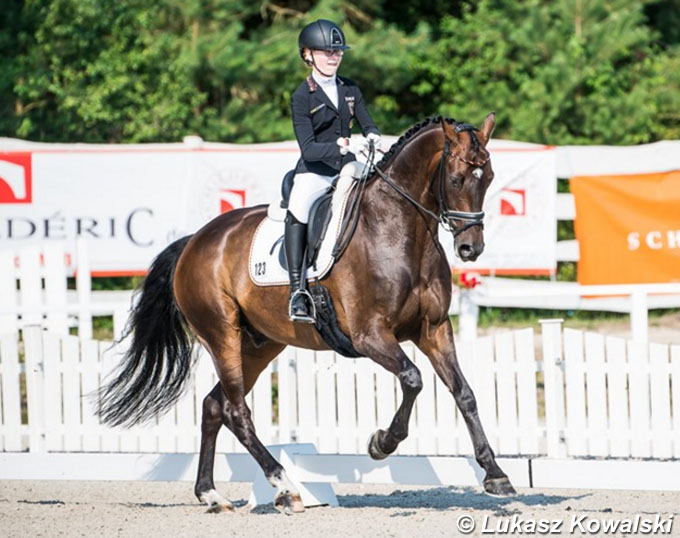
In 2020 the FEI changed the judges of the Children's classes and included a "quality" component. The judges on the short side assess the technical part of the test while the judges on the long side assess the riding skills. This change in system was done to ensure that the quality of riding weighed through more than the quality of horse being ridden.
"The Children test will be judged with the aim to focus on the riding skills of the Athletes, the use of the aids, precision in the execution of the movements and harmony with the horse (presentation)," the FEI stated when they announced the change in judging.
Paschertz Wins Preliminary Test
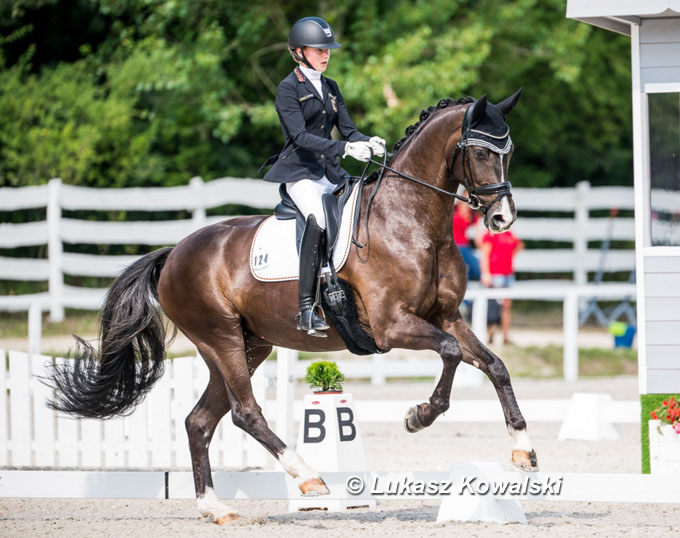
Germany's Clara Paschertz and her 7-year old Oldenburg gelding Danubio OLD (by Dante Weltino x Laudabilis) aced the class scoring a total of 83.869%. Her marks were 76.488 for the technical component of the text, while she got 91.250% for the quality component (9.4 for seat, 8.9 for aids and precision, and 9.3 for general impression).
Team mate Emily Rother landed second place aboard the 9-year old Oldenburg gelding Jasper (by Jazz Rubin x Pik Donnerhall). Rother scored 82.923% with 76.845% for the technical component and 89.00% for the quality component (8.8 for seat and aids, 9.0 for precision and general impression).
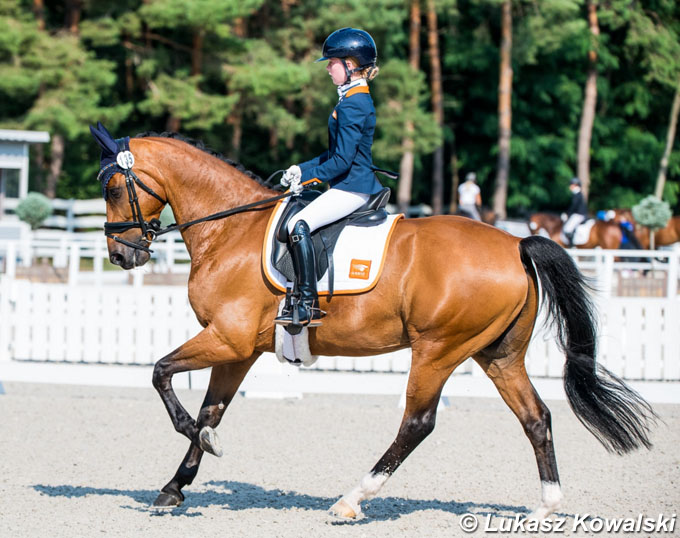
Germany's third rider, Caroline Miesner on the 8-year old Thuringian bred Angelina (by Decurio x Liberator) was fourth with 81.399% (74.048% technical score, 88.750% quality score).
The Dutch train of three riders followed in fifth, sixth and seventh place (Veerle van Hof, Veerle Farla, Maura Knipscheer).
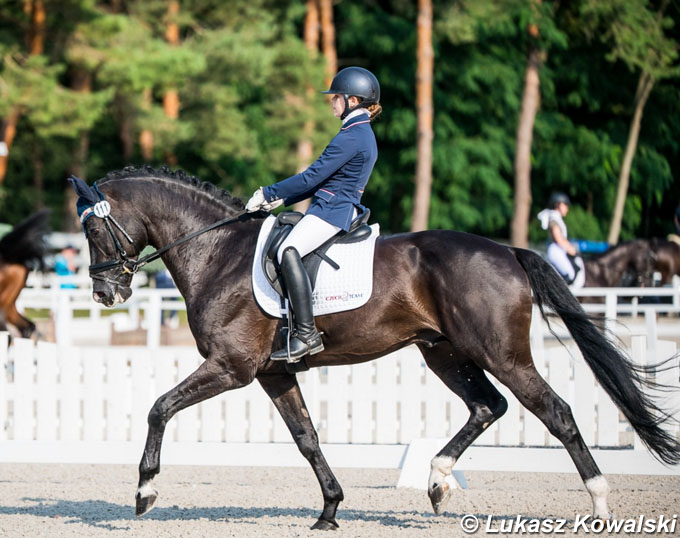
Austria's Valeria Bader and Vemmetofte Roscoe, a 14-year old Danish gelding by Romanov, was 9th with 74.846% in total. France's Eloise Thomas completed the top 10 with the Rhinelander, pony bred Kind of Magic Fast (by FS Champion de Luxe x Marsvogel) on a score of 73.798%.
Quality Component Has Weight
It is interesting to analyze the effect of this newly installed quality component into the judging of the Children's classes. Observing these quality marks, one can notice that riders from Germany and The Netherlands get a relative boost of their score of around 18%, while for riders from other nations (France, Italy) the quality score has a positive boost of about 7.5% on their marks. The Eastern European riders get boosted by 2 - 4% with their quality score.
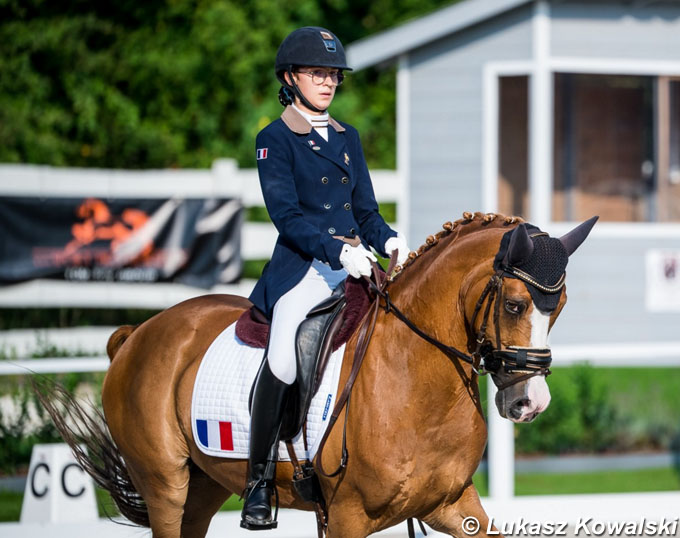
Let's look at some marks in detail: Hungarian rider Lucia Lokos has a lower technical score (64.583%), but her quality component of 71.750% (11% boost) pushes her overall mark to 68.167% (25th place). The majority of rides have only a few percentage points more in the quality score, but with Lokos it's almost 7% difference. The biggest difference is noted with Dutch rider Veerle van Hof who has a 71.9 technical score and an 88.5 quality score (23% boost)
The question remains if the quality of the riding is that much better from the Dutch and German riders - maybe it is?! - or if still the overall ground quality of the horse and its training impacts the quality score? Does a better trained horse automatically lead to a better sitting and steering rider? Food for thought.
Text by Astrid Appels - Photos © Lukasz Kowalski
Related Links
Scores: 2020 European Children and Junior Riders Championships
2020 European Children/Junior Championships Kick Off with Opening Ceremony and Warm Up Class
Eurodressage coverage of the 2020 European Youth Championships